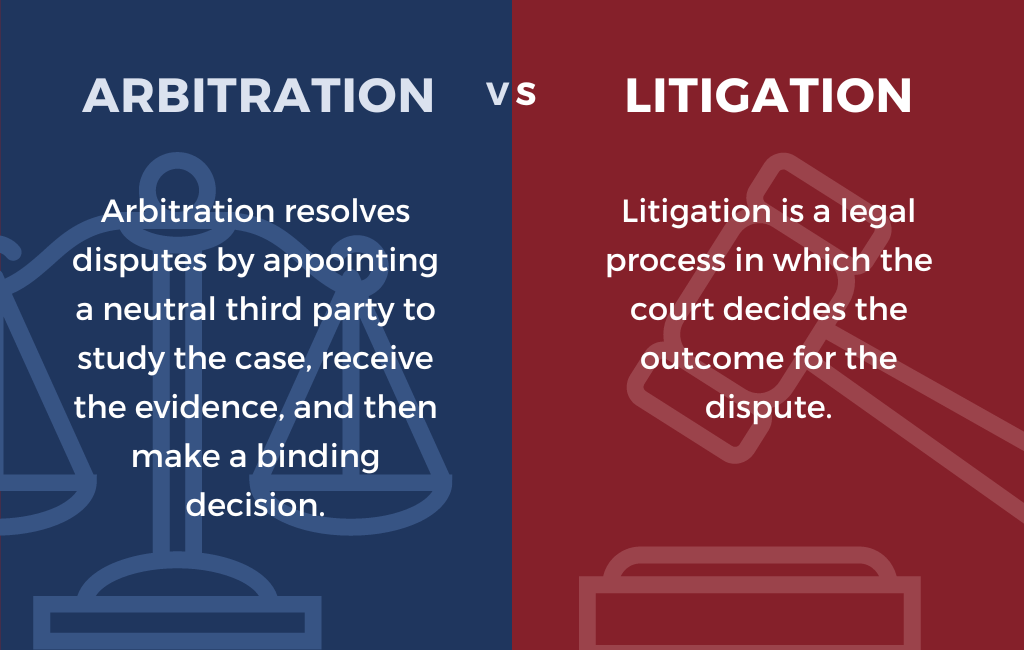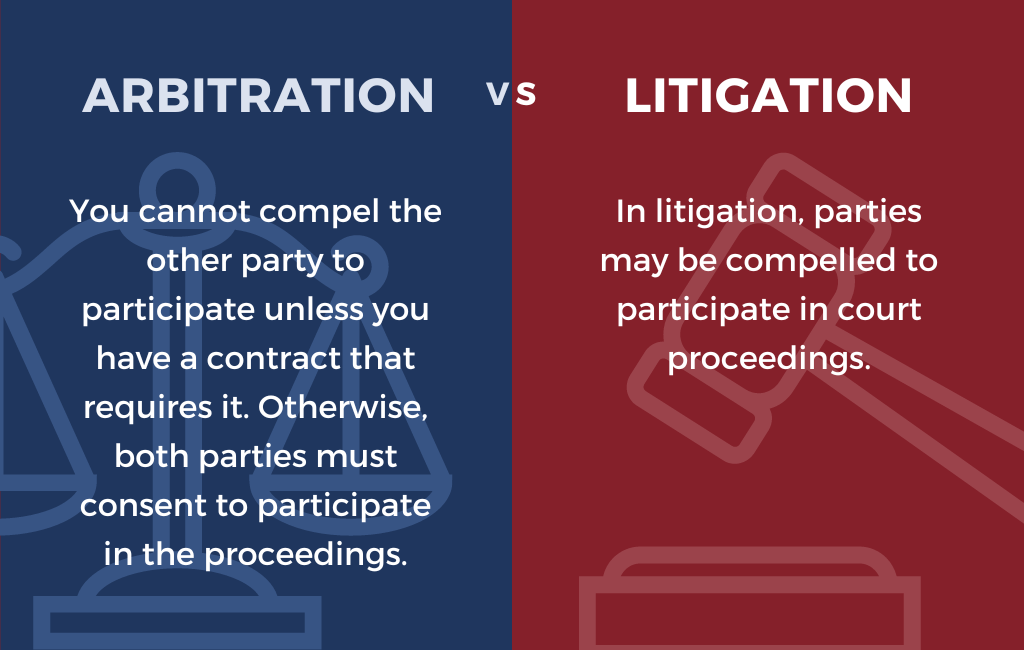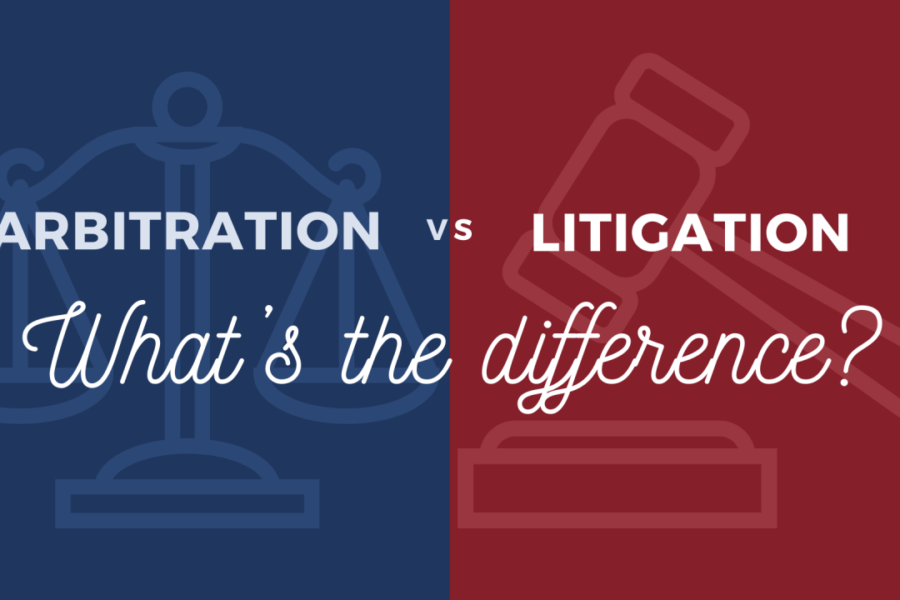In the realm of legal systems, disputes are inevitable. Whether it’s a contractual disagreement between businesses, a family dispute over property, or a personal injury case, conflicts arise and demand resolution. Traditionally, litigation has been the primary method of resolving such disputes, but alternative dispute resolution (ADR) methods have gained prominence in recent years, offering parties more flexibility, efficiency, and control over the resolution process. In this article, we’ll delve into the intricacies of litigation and alternative dispute resolution, comparing and contrasting these two approaches.

Litigation: The Traditional Path to Justice
Definition and Process: Litigation refers to the process of resolving disputes through the court system. It involves formal legal proceedings where parties present their cases before a judge or jury, who then render a decision based on the applicable laws and evidence presented. The litigation process typically follows a structured sequence of steps, including:
- Pleadings: The initiation of the lawsuit through the filing of a complaint by the plaintiff and the defendant’s response with an answer or motion to dismiss.
- Discovery: The exchange of information and evidence between the parties through methods such as depositions, interrogatories, requests for documents, and subpoenas.
- Pre-trial motions: Parties may file motions to resolve legal issues or seek dismissal of claims before trial.
- Trial: The presentation of evidence, examination of witnesses, and arguments by attorneys before a judge or jury.
- Judgment: The court’s decision is based on the facts and applicable law, which may result in a verdict or a ruling on legal issues.
Advantages and Disadvantages: Litigation offers several advantages, including:
- Legal Protection: Court judgments are legally binding and enforceable, providing parties with a sense of security and finality.
- Due Process: Litigation ensures procedural fairness and adherence to legal principles, safeguarding parties’ rights.
- Preservation of Precedent: Court decisions contribute to the development of legal precedent, guiding future cases and promoting consistency in the application of law.
However, litigation also has its drawbacks:
- Cost and Time: Litigation can be time-consuming and expensive, involving legal fees, court costs, and prolonged proceedings.
- Adversarial Nature: The adversarial nature of litigation may exacerbate conflicts and strain relationships between parties.
- Lack of Control: Parties have limited control over the process and outcome, as decisions ultimately rest with the judge or jury.
Alternative Dispute Resolution: Exploring Options Beyond Litigation
Definition and Types: Alternative dispute resolution encompasses various methods of resolving conflicts outside the traditional court system. ADR techniques are designed to promote cooperation, flexibility, and efficiency in resolving disputes. Some common forms of ADR include:
- Mediation: A neutral third party, known as a mediator, facilitates negotiations between the parties to help them reach a mutually acceptable resolution.
- Arbitration: Parties submit their dispute to an impartial arbitrator or panel of arbitrators, who render a binding decision based on the evidence and arguments presented.
- Negotiation: Parties engage in direct discussions to reach a settlement agreement without the involvement of a third party.
- Collaborative Law: Each party retains their own attorney but agrees to work together in a cooperative, non-adversarial manner to resolve the dispute.
Advantages and Disadvantages: Alternative dispute resolution offers several benefits, including:
- Cost-Effectiveness: ADR processes are often less expensive than litigation, as they typically involve fewer procedural formalities and legal fees.
- Efficiency: ADR can expedite the resolution process, allowing parties to avoid the delays associated with court proceedings.
- Confidentiality: ADR proceedings are generally private and confidential, offering parties greater discretion and protection of sensitive information.
However, ADR also has its limitations:
- Enforceability: While arbitration awards are generally enforceable, mediated settlement agreements may lack the same level of enforceability as court judgments.
- Quality of Decision-Making: The expertise and impartiality of mediators or arbitrators may vary, potentially affecting the quality and fairness of the outcome.
- Limited Remedies: ADR processes may not provide the full range of remedies available in litigation, particularly in complex legal disputes.
Comparative Analysis: Litigation vs. Alternative Dispute Resolution
1. Formality and Procedural Rigidity: Litigation follows formal procedures governed by court rules and legal statutes. The process is highly structured, with strict adherence to rules of evidence and procedure. In contrast, ADR methods offer greater flexibility and informality, allowing parties to tailor the process to suit their specific needs and preferences. This informality can promote creativity and innovation in problem-solving but may also lead to concerns about procedural fairness and due process.
2. Control and Autonomy: In litigation, parties relinquish control over the resolution process to the court, which ultimately decides the outcome. By contrast, ADR empowers parties to exercise greater control and autonomy over the resolution process. Parties have the freedom to choose the method of ADR, select the neutral third party (if applicable), and actively participate in negotiations or decision-making. This increased control can enhance parties’ satisfaction with the outcome and promote a sense of ownership over the resolution.
3. Time and Cost: Litigation is often characterized by lengthy proceedings and substantial costs associated with legal fees, court expenses, and expert witnesses. ADR methods, on the other hand, are generally more time-efficient and cost-effective. By streamlining the resolution process and minimizing procedural formalities, ADR can significantly reduce the time and expense involved in resolving disputes. This cost-effectiveness makes ADR particularly attractive for parties seeking a swift and economical resolution to their conflicts.
4. Confidentiality and Privacy: Confidentiality is a key advantage of ADR, as proceedings are typically conducted in private, away from public scrutiny. Parties can discuss sensitive issues and explore potential solutions without fear of disclosure or reputational harm. In contrast, litigation is a public process, with court proceedings and documents accessible to the public. This lack of confidentiality in litigation may discourage parties from openly discussing their concerns and interests, potentially hindering the negotiation process.
5. Finality and Appeal: Court judgments in litigation are subject to appeal, allowing parties to challenge the decision if they believe legal errors were made. This appellate process provides a mechanism for correcting mistakes and ensuring the fair administration of justice. In contrast, ADR decisions are generally final and binding, with limited avenues for appeal. While this finality can promote the resolution of disputes and the certainty of outcomes, it also raises concerns about the potential for errors or bias in decision-making.

Conclusion: Finding the Right Path to Resolution
In conclusion, both litigation and alternative dispute resolution offer distinct advantages and disadvantages in the resolution of legal disputes. Litigation provides a formal, structured process with enforceable court judgments but can be time-consuming, costly, and adversarial. Alternative dispute resolution methods offer flexibility, efficiency, and control over the resolution process but may lack enforceability, procedural rigidity, or the full range of remedies available in litigation.
Ultimately, the choice between litigation and ADR depends on various factors, including the nature of the dispute, the preferences of the parties, and the desired outcomes. In some cases, litigation may be necessary to vindicate legal rights and establish precedent, while in others,
Adv. Khanak Sharma


I always feel valued and heard at this pharmacy.
where to buy cheap lisinopril online
Quick, accurate, and dependable.
Learn about the side effects, dosages, and interactions.
cytotec for postpartum hemorrhage
Their international collaborations benefit patients immensely.
I do not know if it’s just me or if everybody else experiencing issues
with your site. It looks like some of the written text within your content are running off the screen. Can somebody else please provide feedback and let me
know if this is happening to them as well? This might be a problem with my web browser
because I’ve had this happen previously. Thanks
my page nordvpn coupons inspiresensation
350fairfax nordvpn
I am really impressed with your writing skills and also with the layout
on your weblog. Is this a paid theme or did you customize it yourself?
Anyway keep up the excellent quality writing, it’s rare to see a nice blog
like this one today.
When I originally commented I clicked the “Notify me when new comments are added” checkbox and now each time a comment is added I get four
emails with the same comment. Is there any way you
can remove people from that service? Bless you!
Feel free to surf to my blog post; eharmony special coupon code 2025
Excellent site. Lots of useful info here. I am sending it to several friends
ans also sharing in delicious. And naturally, thank you on your effort!
My page vpn
977021 516223I gotta favorite this web site it seems handy really beneficial 467404